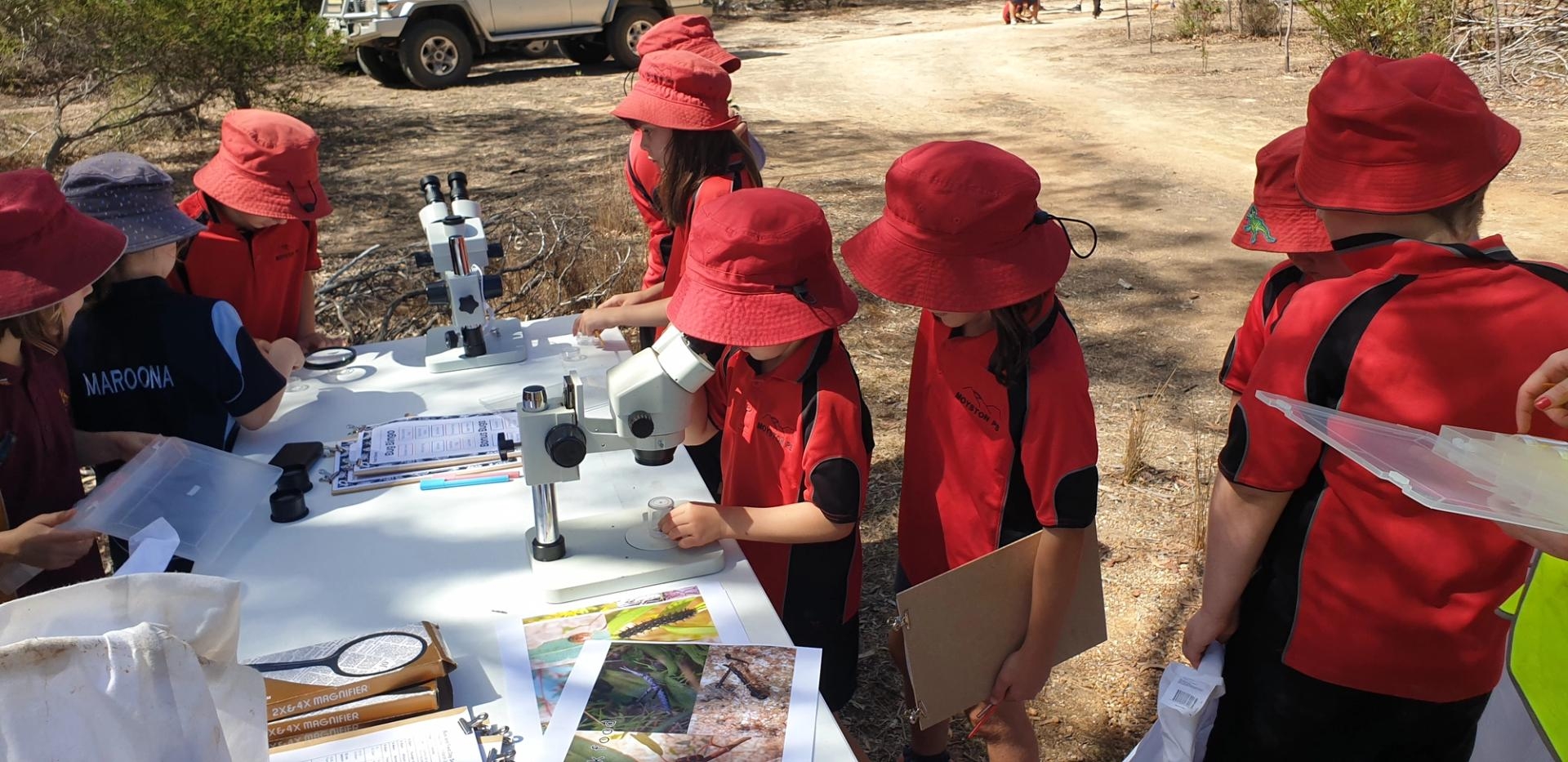19 March 2024
In an exciting day out earlier this month, over 100 students from Willaura, Maroona, Moyston, Pomonal, and Buangor Primary Schools came together in Moyston for a special "bug-bioblitz" cluster day field trip. The trip was organized by the schools' local landcare facilitators: Nick Moll of the Upper Hopkins Land Management Group and Elia Pirtle of Project Platypus. Their goal? To get kids excited about nature and teach them about the tiny creatures that play a big role in our world.
The adventure started at Moyston Primary School, where Nick and Elia led the students in a discussion about the importance of 'invertebrates' - animals without backbones, like insects and spiders, or colloquially as we call them "bugs". The students brainstormed what a world without bugs would look like - and all agreed it wouldn't be pretty! Who would want to live in a world without any fruit or vegetables to eat (with no 'pollinators'!), and an ever growing ground layer of rotting plants and animal poop (with no 'recyclers' to break it down!).
Once in the bush, Elia called on her background as a research scientist in entomology (the study of invertebrates) to give the students a demo on how to use the very expensive and high-tech tools of a professional entomologist. (Just kidding, these tools are incredibly cheap and simple, and are mostly made up of pillow cases, sticks, and plastic jars). The students broke up into teams, equipped with a sweep net, a beat sheet, and a kit of vials and paintbrushes, for capturing bugs for a closer look. Then we spent the morning 'bug hunting,' and checking out our finds under microscopes and magnifying glasses.
After lunch, the students got creative, using their imaginations to design the "ultimate insect," inspired by the real bugs they found. This activity made them think about the roles different bugs play in the environment and what features they would need to survive. Was their critter going to be a 'pest controller' or a 'pollinator'? Did they need sharp teeth, or soft wings? (Or the ability to spit poison, like the very intimidating ultimate insect on the left!).
Finally it was time to get up and shake off our extra energy, before the ride back home. Nick had just the activity for it. He had created a unique game to let the students practice building food webs for themselves. Each student drew a card from a stack, and each card featured a photo of native species that could be found right here in Moyston. Then the kids had to find their partners in a food web (in other words, who they ate, and who would eat them) and link up their arms. Spiders paired up with moths, moths with flowers, cockroaches with dead leaves and bark, and birds and frogs got to help themselves to the variety of invertebrate 'snack food'. We played the game with several combinations of species, and led discussions of what happens when an ecosystem doesn't have enough predators to eat all the prey, or enough flowering plants to feed all the pollinators.
The Moyston bug-blitz was more than just a fun day out, it was a powerful lesson in looking closely at the world around us and caring for it. The activities helped students see the beauty and importance of the littlest members of our natural world. And more that that, the bug-blitz let the students become important citizen scientists themselves!
Each bug the kids found was photographed and recorded in iNaturalist, a global database where people from all over the world share observations of nature, and track biodiversity. So far, invertebrate experts have already helped us identify 45 different species, among the 103 different bugs that were found. The bugs were released back into the bush after their photo shoot. Check out all our bugs at the iNaturalist project below:
The bug-blitz in Moyston showed everyone that bugs might be small, but their role in the environment is huge. And by learning about them and sharing that knowledge through projects like iNaturalist, we can all help look after our world a bit better. It's a reminder that every one of us, no matter how small, can make a big difference in protecting the planet.
Nick and Elia can't wait to continue running these environmental themed cluster day field trips in each of the coming terms. Their time is funded by the Victorian Landcare Facilitator Program and additional grants including the Victorian Landcare Grants. Thank you to Willaura Primary School teachers for the amazing photos of the day!

Elia Pirtle
Landcare Facilitator
